What We’ve Learned
A snapshot of the best patient and family engagement programs honored with the Sherman Awards throughout the years


Arundi Venkayya
Curator of EngagingPatients.org
In 2014, EngagingPatients.org created the Sherman Awards for Excellence in Patient Engagement as part of our ongoing mission to share best practices in patient engagement. Very simply, we believe improving communication and boosting patient and family engagement will result in better care, advance patient safety and improve outcomes.
What we didn’t know until we dove into this space is how patient and family engagement cuts across the entire spectrum of care. We’re continually impressed by the vast array of programs in acute, ambulatory, pharmacy and long-term care that target patient engagement. Reviewing Sherman Award nominations every year gives us an exceptional picture of the work being done at the forefront of the patient engagement space.
We’ve gathered a snapshot of what we’ve learned from previous winners and finalists. For more details about these and other nominees, please visit our patient engagement in action archive.
2019 Sherman Award winners
Mind Springs Health Phase-Based Care Program
A team approach can speed recovery
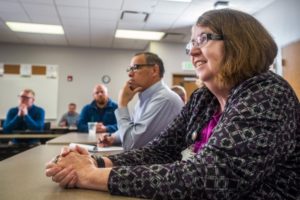
Limited access to timely mental health treatment is a critical issue in our country. Every year, more than 6 million patients present to emergency departments with psychiatric crises as their primary complaint. The Rapid Recovery Clinic for depression was created to provide timely access and intensity-appropriate treatment for patients at Mind Springs Health, the Community Mental Health Center for 10 counties in rural Western Colorado.
The program shortens wait time to four days after initial intake, rather than the national standard of one to three months. A multidisciplinary team meets with each patient to review treatment options including psychotherapy and medication. Additionally, patients are offered access to case management, peer support and group therapy, which they can attend weekly without an appointment.
The shared clinical contributions of all team members working on a single care plan means that patients get more clinical contact to intensely address each patients’ needs.
Results have been significant. Patients are seen more quickly, 63 percent of patients are considered “in recovery” by week six (based on continual monitoring of PHQ-9 scores), and 78 percent are considered “in recovery” by week 12. In addition, the cumulative number of contact hours performed by all team members is higher than the traditional care model.
Boston Children’s Hospital’s Perioperative Complex Spine Surgery Team
Reengineer processes to be family-centered
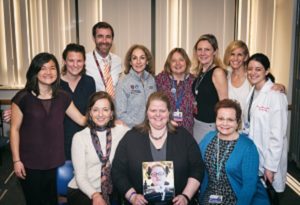
Frustrated by the preparation process for spinal fusion surgery on children with neuromuscular scoliosis, the perioperative complex spine surgery team at Boston Children’s Hospital decided to re-engineer the process for high-risk surgeries involving these children with complex medical needs. Their goal was to make the process patient-centered and improve communication and coordination among families and members of their care teams.
The team — particularly two parents of children who underwent spinal fusion and who are medical professionals — devoted countless hours generating and implementing ideas to improve care and ultimately engineered seven core processes to improve the experience for patients and families. These include proactive communication from the surgeons to the child’s other providers and incorporating a comprehensive outpatient health assessment with risk identification, shared decision making and planning.
Results have been impressive. As pre-op pediatrics involvement increased, length of stay, hospital costs and surgical site infection rates have decreased significantly. Families have been highly satisfied, and the new design is being hardwired into standard practice.
2018 Sherman Award winners
MedStar Health Sepsis Collaborative
Awareness is critical for quick care
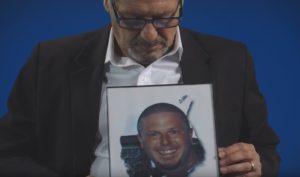
Sepsis is a leading cause of death in the U.S., causing more deaths than breast cancer, prostate cancer and AIDS combined, according to the CDC. More than 1.5 million Americans get sepsis each year, and about 250,000 of them die. Yet, there’s a significant lack of awareness around this serious threat. Identifying these signs and symptoms is critical to getting patients the care they need to survive.
The MedStar Health Sepsis Collaborative is a comprehensive quality improvement initiative that partnered with sepsis survivors and family members of patients lost to sepsis. Their collaborative goals are to improve early identification and treatments through reliable processes and public awareness.
MedStar’s patient and family advisory councils for quality and safety serve as key partners and are executing regional sepsis public awareness campaigns. Patient and family advisory council members have developed materials for the campaign including stories shared through video. Making sepsis personal and tangible has accelerated practice changes, and the video testimonials also are used during resident orientation.
The program is now focused on improving emergency department processes related to identifying and treating sepsis.
Organizational quality, public awareness and care outcomes all have improved since the creation of the program. Organizational improvements include standardized education for care providers, support staff and PFACQS members, a sepsis bundle compliance dashboard, automated orders and alerts and real-time surveillance tools. Public awareness efforts are being tracked and evaluated, and Maryland legislation has been introduced on behalf of a patient advisor to develop a statewide sepsis awareness campaign.
Memorial Rehabilitation Institute’s Family in Training program
Teach to Engage Families in Care
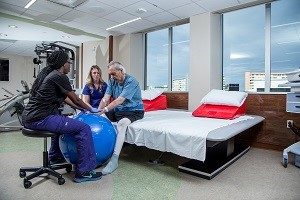
Memorial Rehabilitation Institute’s Family in Training program was created to address an increased number of family-related falls on Memorial’s 89-bed adult inpatient rehab unit. At Memorial, families are encouraged to “room-in” (i.e., stay with their loved ones 24/7). As families became more comfortable staying on the unit, they started helping their loved ones move from bed to a wheelchair or to the toilet — in part because they didn’t want to “bother” the staff.
Unfortunately, families weren’t always prepared for how difficult these transfers can be, and patients fell. The institute’s falls reduction committee developed a proactive caregiver training program that is initiated early in each patient’s stay. A willing family member partners with a physical therapist, occupational therapist and nurse to receive hands-on training on five essential elements of care. Once the family member achieves competency in all five areas, they receive a bright orange band labeled “Family in Training,” which communicates to all staff that they’re willing and able to independently assist their loved one in these five areas.
The results? In addition to decreasing the number of patient falls, families said they felt engaged, confident and proud to achieve their orange band and help their loved ones. An unanticipated gain was that fewer families chose to send their loved ones to a skilled nursing facility.
Special Recognition: Sherman Citation for Pediatric Patient Engagement
Dayton Children’s Hospital’s Family Resource Connection
Looking beyond hospital walls — where kids play, learn and grow!
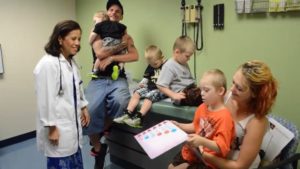
When patient families seek medical care at Dayton Children’s, they’re often facing additional critical challenges in their lives (e.g., lack of food, unemployment, difficulty paying utility bills), which can adversely affect their health. The Dayton Children’s Family Resource Connection uses a patient’s visit as an opportunity to evaluate and address these non-medical issues in addition to performing standard care. The hospital trains student advocates from local universities in communication, engagement, respect and self-awareness. These advocates use a screening tool developed by the hospital to evaluate a family’s needs in a primary care clinic setting and then match them with available resources.
Gathered information is entered into a patient’s electronic medical record so clinicians are aware of challenges and so advocates follow up with families enrolled in the program every seven to 10 days. The program has screened more than 3,000 families for social needs and engaged more than 1,800 patient families, resulting in more than 4,000 referrals and almost 700 documented resource connections.
2017 Sherman Award winners
University of Rochester Medical Center’s UR Voice Team
Data make a difference

UR Voice uses an NIH-funded software program called PROMIS (patient-reported outcomes measurement system) to capture patient perspectives on care. Patients take a three- to five-minute iPad survey at each of their outpatient visits. PROMIS captures patient perspectives on important indicators including their physical function, pain and mood. The data are used for shared decision-making — specifically evaluating whether a treatment or surgery is a good choice based on a patient’s level of impairment or pain.
This allows patients to compare their data with U.S. normative data and shows what the treatment could achieve for them before they start using predictive analytics. The team included patients in the project pilot and made changes to the program based on their input. The survey tool is being used by 550 physicians in 30 clinical programs, and to date, more than 350,000 surveys have been completed by more than 112,000 patients.
Holland Bloorview Kids Rehabilitation Hospital’s Client- and Family-Centered Care Simulation Development Team
Show, don’t tell for powerful results
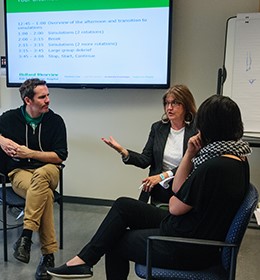
A multidisciplinary team of hospital client- and family-centered care leads, hospital leadership, clinicians and families developed simulation scenarios that provide hands-on learning about embedding patient- and family-centered care into daily practice. This training ultimately leads to an improved experience of care for patients and families. All newly hired clinicians and students receive the simulation training, and current staff members are also trained to ensure consistency in practice.
Of the seven scenarios the team developed, four are being used as teaching tools. Two sessions are videotaped, and two are live. Families were full partners in simulation development, ensuring authenticity and lasting impact. Families continue to work with staff and serve as simulation facilitators to evolve these workshops. Holland Bloorview has been tapped by the government of Ontario to collaboratively develop and deliver family-centered care training including simulation across the province.
2016 Sherman Award winners
Iora Health

Iora Health was recognized for its transformative approach to patient care that focused on building an engaging new model of high-impact, relationship-centered care with a specific patient population — Dartmouth College employees. The program restructured Iora’s financing model, assigned personal health coaches to each patient and transformed their business and staffing model to truly address patient needs and desires. As a result, the team increased clinical quality; reduced use of expensive medical services (including hospitalizations and emergency department visits) and enhanced the quality of patients’ care.
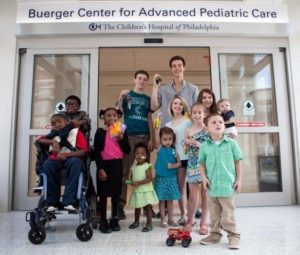
Children’s Hospital of Philadelphia (CHOP)
A significant portion of the population that visits CHOP’s Buerger Center for Advanced Pediatric Care are diagnosed and treated for Autism Spectrum Disorder. To ensure the hospital was addressing the unique needs of these children, CHOP’s Patient and Family experience team and outpatient clinical service leadership actively involved patients and families — from inception to completion — in the design, planning, patient flow layout and construction of the center.
North Shore LIJ (now called Northwell Health)
2015 Sherman Award winner
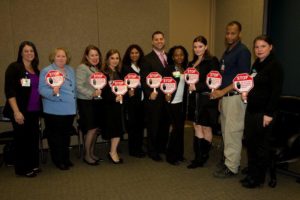
The North Shore LIJ Health System’s patient identification team focused on a system-wide approach to standardizing patient identification. They involved patients and families in the process and created multiple tools including a list of “eight critical elements for patient identification” and “eight patient rights.”

